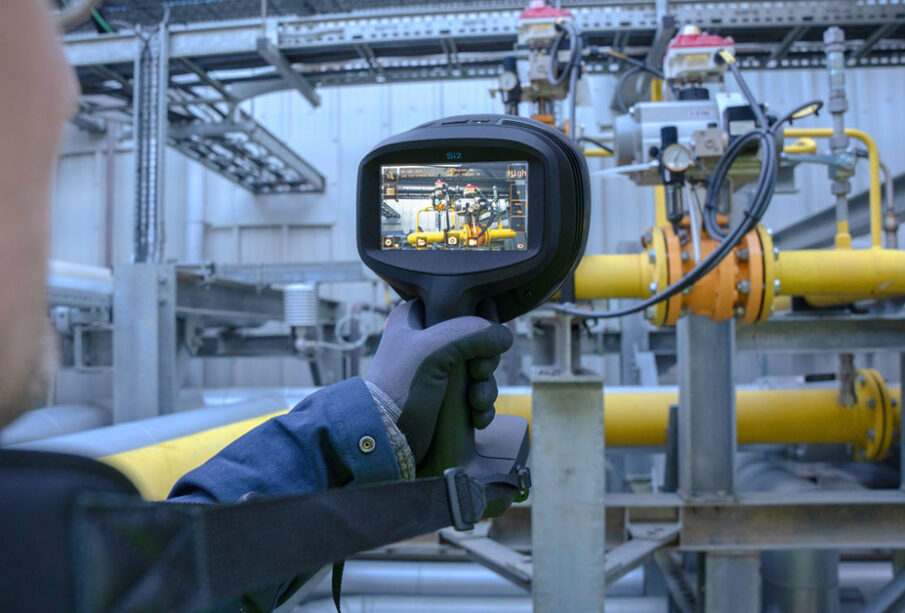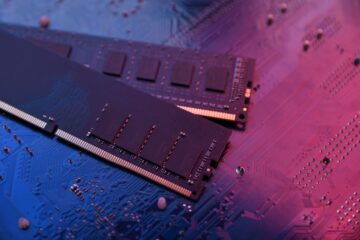Combining the Power of Acoustic Cameras with Thermal Imaging Software for Enhanced Air Leak Detection

Ultrasonic cameras offer an effective way for technicians and companies to monitor air leaks in their systems and equipment, such as compressed air and HVAC systems. However, further integrating acoustic imaging devices with thermal imaging capabilities is a game changer in providing valuable extra information. Harmonizing the power of these technologies offers a robust solution for detecting, analyzing, and reporting air leaks in industrial environments.
The software helps analyze the acoustic images and data to enhance maintenance efficiency and system reliability. By leveraging the strengths of ultrasonic imaging and thermal analysis software, engineers and maintenance professionals can achieve more comprehensive insights into equipment performance and integrity.
-
Enhanced Detection Accuracy
Integrating acoustic and thermal imaging technologies offers a robust solution for detecting air leaks in compressed systems. An advanced ultrasonic air leak detector captures high-frequency sound waves emitted by air leaks, converting them into visual images that indicate the exact leak locations. Combining acoustic sound sources with thermal signatures allows for targeted repairs and minimizes downtime.
The thermal imaging software helps create visual heat maps highlighting areas of concern by analyzing the relationship between thermal anomalies and acoustic emissions. That helps identify the root cause of issues more effectively.
Engineers can assess leak severity and prioritize repairs by analyzing these thermal patterns. Combining both technologies enhances accuracy, reduces false positives, and enables faster troubleshooting, ultimately leading to cost savings through early detection, efficient maintenance and repairs, and prevention of energy losses and equipment damage.
-
Detailed Analysis of Leak Severity
Integrating acoustic cameras with reliable thermographic software enables a precise assessment of leak severity by combining acoustic and thermal data. Acoustic cameras detect the high-frequency sounds of air leaks, while thermographic software captures corresponding temperature changes. The fusion allows for detailed analysis and reporting, providing clear insights into leak characteristics.
Key features of this integration include automatic fault classification, which helps categorize leaks based on their severity, and precise leak volume estimation. The dual approach improves detection accuracy and enhances maintenance strategies by identifying critical issues and estimating potential cost savings. Consequently, it optimizes repair prioritization and minimizes system downtime.
-
Improved Maintenance Efficiency of Compressed Air Systems
Integrating acoustic cameras with thermal imaging software into maintenance routines of compressed air systems significantly enhances efficiency in detecting and repairing air leaks. Advanced software solutions offer sophisticated processing features for acoustic camera images, enabling detailed analysis and predictive maintenance of critical components. This integration streamlines system troubleshooting by providing clear, professional-grade images and comprehensive reports.
For example, thermal imaging software can overlay thermal data with acoustic images to pinpoint exact leak locations and assess their severity, facilitating targeted repairs and reducing downtime. This harmony between acoustic and thermal data improves overall productivity, allowing maintenance teams to address issues proactively, optimize repair schedules, and ensure the continued reliability of systems, ultimately leading to more efficient and cost-effective maintenance practices.
-
Optimizing Inspection Routes with Acoustic-Thermal Data
Combining the power of ultrasonic cameras with thermal imaging software can empower users to create their inspection maps by identifying potential problem areas in advance, allowing for optimized inspection paths. Using images and data from the acoustic camera, thermal imaging software with route creator capabilities will help technicians generate optimized inspection paths and download them on their cameras to ensure maximum coverage and efficiency. The camera then guides the user through a pre-planned inspection path.
The advanced collaboration capabilities transform traditional inspection methods by:
- Prioritizing repairs: Pinpointing high-risk areas allows for targeted maintenance efforts, maximizing resource allocation.
- Reducing downtime: Early detection of issues through optimized routes prevents unexpected equipment failures.
- Enhancing overall system health: Regular and efficient inspections contribute to a longer lifespan for compressed air systems.
- Consistency and Accuracy: Every inspection follows a pre-determined path, minimizing the risk of missed areas. The predefined route helps to avoid human error when selecting inspection points.
Through the intelligent analysis of acoustic and thermal data, the software creates a roadmap for maintenance teams, streamlining operations and improving overall system reliability.
-
Creation of Advanced and Insightful Air Leaks Inspection Reports
Fusing acoustic cameras with reliable thermal imaging software opens new possibilities for creating comprehensive and informative reports, offering several key advantages.
- Combined Data Visualization: Overlaying acoustic and thermal images in a single report provides a powerful visual representation of equipment health, enhancing problem identification and understanding.
- Quantitative Analysis: Incorporating quantitative data, such as leak rates, sound levels, and temperature measurements, makes reports more informative and actionable.
- Customizable Templates: The ability to tailor reports with customizable templates from Thermal Studio software ensures that they meet specific needs, whether for internal analysis or external stakeholders.
Also, comprehensive reports can prove compliance with industry standards and regulations. Leveraging the capabilities of acoustic cameras and thermal imaging software allows users to create reports that document findings while offering actionable insights to improve equipment performance and reliability.
-
Enhances Calculation of Air Leak Size and Energy Loss
Integrating acoustic cameras with thermal imaging software enhances the ability to assess and quantify energy loss from leaks in compressed air systems and equipment. Acoustic data, which pinpoints the location and size of leaks, is combined with thermal imaging that measures temperature differentials around these leaks. Integrating these data sets from an acoustic camera gives the software a comprehensive view of leak characteristics.
For instance, thermal imaging identifies temperature drops at leak sites, while acoustic measurements determine the leak’s size. The combined analysis allows for precise energy loss estimation by correlating temperature variations and leak dimensions. The software can then estimate the amount of wasted energy based on these factors, helping organizations prioritize repairs and achieve significant energy savings and improved operational efficiency. Technicians can leverage this data to stop energy loss, lower greenhouse gas emissions, and achieve sustainability targets.
In conclusion, acoustic cameras excel at pinpointing leak locations and mechanical faults by capturing high-frequency sound waves that are otherwise inaudible. The combination thoroughly assesses leak size and energy loss when paired with thermal imaging software like Thermal Studio, which offers detailed temperature data and visual overlays. However, identifying a brand that provides acoustic cameras compatible with reliable thermal imaging software is essential. The integration enhances detection accuracy, enables precise energy loss calculations, and empowers organizations to optimize repair strategies of compressed air systems, leading to significant cost savings and improved operational efficiency.











